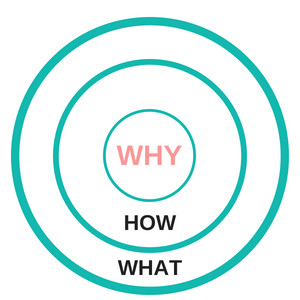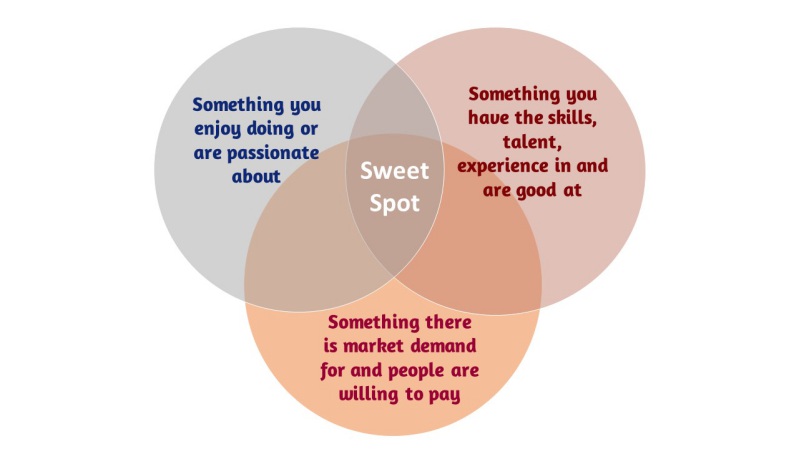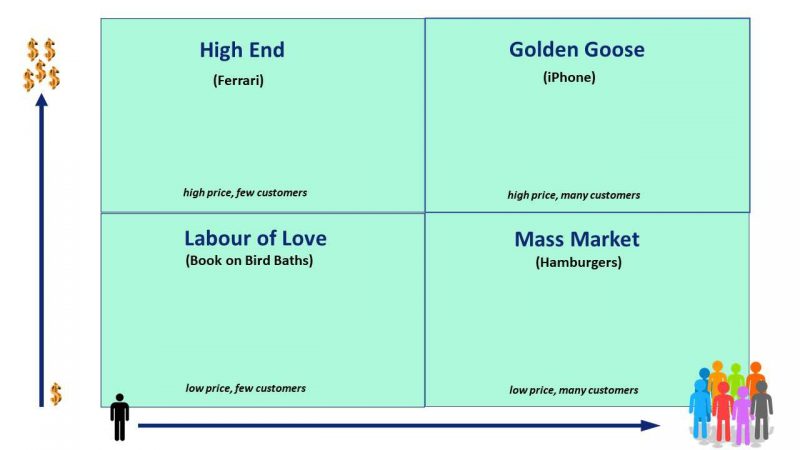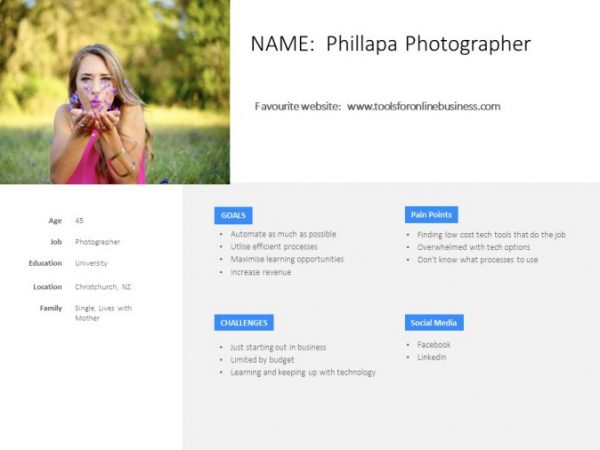At this stop, you will find resources to help you identify your niche market and find your ideal customer.
Clarify your 'Why' and unearth your talents to generate viable information product ideas.
A profitable Information Business Owner has clarity of purpose, understands their market and targets the needs of their audience with laser-focus.
Common Online Business Mistakes to Avoid
Many first-time online business entrepreneurs falter at the first hurdle. They struggle to come up with a viable business idea that utilises their talents or they lack clarity of purpose.
Others dive head first into creating a product before they have taken the time to understand the needs of their potential customers. Some try to be all things to everyone. Resulting in very little sales, unfocused effort and meeting the needs of no one.
Utilising the resources provided below will help you avoid these common online business mistakes.
Welcome to the First Stop Along Your Online Business Journey
The identification phase is all about generating ideas, investigating your options and exploring demand. Here you will identify your niche, find your ideal customer and your product offering. You will also decide which medium and format you will use to deliver your awesome solution in.
Throughout this stop, you will gain clarity of purpose. By immersing yourself in your potential market you will gain the necessary insight to help you filter your options. Selecting those that they are closely aligned to your 'Why'.
Once you have those steps under control you will need to narrow your target market. Identify your niche and increase your understanding of the needs, wants and desires of your audience. This will enable you to identify your ideal customer and create a buyer persona. You will utilise this buyer persona throughout your product creation journey.
So let's get started!
Stage 1 - Identify Your 'Playing Field'
Clarifying Your 'Why' Helps Attract Your Preferred Customer


WHAT someone does is easy to identify. As an individual, we tend to answer in terms of the job function we have. So for us, we may answer an online business entrepreneur. Companies will more likely describe the products or services they sell. If we were to answer HOW we do WHAT we do we may answer, "we create valuable information products and sell them online". We tend to try to identify the 'unique selling proposition'. Or explain how we do something better or different from our competitors.
Think Apple. They like many other technology companies, create and sell technology, smartphones, laptops etc. Yet they have an almost 'cult-like' following. Something very few companies have been able to achieve. They have customers queuing up to buy the latest release of their products. A devoted fan-base who are quick to buy any new product the company launches.
Good quality and features do matter. But on their own, they are not enough to produce the passionate customer loyalty experienced by Apple. Why do they have a disproportionate level of success, are consistently more profitable and arguably more innovative? They start with their WHY. They are perceived as being authentic. Because WHAT they do demonstrates their WHY. To challenge the status quo by thinking differently.
Take a look at the examples below and notice the difference.
WHAT focused:
We make great computers.
They're beautifully designed, simple to use and user-friendly.
Wanna buy one?
VS
WHY focused:
Everything we do, we believe in challenging the status quo. We believe in thinking differently.
The way we challenge the status quo is by making our products beautifully designed, simple to use and user-friendly.
And we happen to make great computers.
Wanna buy one?
"People don’t buy What you do, they buy WHY you do it"
Simon Sinek
What if we did as Simon Sinek (author of Start with Why and creator of the Golden Circle) suggests and what Apple has succeeded in doing? What if we started with WHY instead of WHAT? Filtering our decisions, product feature choices and marketing messages through our WHY are just some of the ways to demonstrate our WHY.
When our WHY is visible in WHAT we do and HOW we do it, we will attract our preferred customers. Customers that we will be able to turn into loyal fans eager to buy our new product offerings. Yes, it is often a lot harder to clearly articulate WHY we do WHAT we do. Getting to the bottom of WHY we do what we do takes more brainpower. It requires us to think of things from another perspective. The rewards, however, are worth it.
Examples of WHY:
Simon Sinek - 'to inspire people to do the things that inspired them, so that, together, we can change the world.'
Peter Docker - 'to enable others to be extraordinary so that they can do extraordinary things'
David Mead - 'to propel people forward so they can make their mark on the world'
Peter Docker and David Mead are co-authors with Simon Sinek of the practical guidebook Find Your Why.
To uncover your WHY consider:
- what is your purpose, cause, belief, the reason for getting out of bed in the morning?
- why does your business exist (besides making money)?
- why should anyone care about your business?
- what is the impact you want to make on the world around you?
Knowing and communicating your WHY is essential for lasting success and customer attraction.
By answering the following questions you will be a step closer to identify your niche market, understanding your audience within it and how your skills, knowledge and talents may serve them:
-
What talents and skills you’re good at?
-
Out of the above talents and skills, what do you enjoy doing most?
-
Of those talents and skills you enjoy, what do people need?
-
From the above needs, what will people pay money for?
Discover Your Talents and Assess Demand
Every one of us has a pool of skills, knowledge, gifts and talents. We also have areas we are passionate about, which may or may not be related to what we do for our 'day job'. Consider where there is market demand and what people are prepared to pay for. The intersection of these presents you with potential business development opportunities. Your 'sweet spot'.


Idea Generation
Brainstorming is a process used by individuals or groups for generating creative ideas and solutions. The focus is on quantity over quality. There is no wrong or right answer, only ideas. It is about being open to all ideas and possibilities without judgement. It is not about overthinking or filtering out ideas, that comes later.
Start off by brainstorming and creating a list of your skills, passions, knowledge, interests, challenges you have overcome. Whatever comes to mind. Don't hold back or self-judge, remember we are aiming for quantity, not quality.
Here are a few helpful prompts to get you started:
- what do people struggle with that you find easy?
- what do your friends or colleagues compliment you on?
- what would you do if you had a free morning or afternoon?
- what are you the 'go-to' person for?
- what do you enjoy reading about, listening to or learning about?
It’s easier to run a business if you’re passionate (and knowledgeable) about what you’re offering. Remember the goal here is generating a list of items without judging whether they are viable or not.
Assess Demand
Before you do an initial assessment of demand for an item on your list cross off any that you have no longer have any passion for or any interest in. Maybe there is something on your list that you are really good at but no longer have a passion for.
For example, although I had been a software programmer for many years as well as having home craft hobbies, these are things that I no longer have an interest in taking further. It doesn't mean that I won't use these skills anymore, it is about not choosing these to develop an online business around. There is no point wasting energy on something you can't muster up any enthusiasm for. So cross them off for now.
How do I Know if my Ideas are any Good?
The ultimate litmus test as to whether your business idea is worth investing any time and money on is whether anyone will pay for it. You may get a positive response from those that you ask whether they think your idea is good or not. Some may say it is fantastic and tell you to go for it. But would they put cold hard cash on the table for it?
Take a moment to consider if people would be prepared to pay, would there be a lot of people or just a few? Would you be able to charge a high price or a low price?


The Demand Matrix is simply a tool to help you figure out whether an idea is worth pursuing or not. You don't need anything fancy to create a Demand Matrix, just pen, paper and a ruler. Take each of your ideas and plot them on a Demand Matrix.
Keep in mind that the purpose of plotting your ideas on the Demand Matrix is to help you filter out less favourable ideas. Just like you passed your ideas through the 'do I care anymore' filter when you eliminated those that you no longer have enthusiasm for. Filtering out ideas early leaves you to focus on those ideas that have a better chance of being profitable. We are not looking to apply an exact science here, we are just taking an educated guess. Go with your gut feeling.
Identify your Playing Field
Now it is time to pick one topic / field from you Demand Matrix that meets your financial goals and is aligned with your WHY. You will then take that topic to explore it more deeply. The aim is to identify your niche and gain an understanding of the market that your niche occupies. Narrow down your topic further to identify a niche that you want to operate within. This will also help you gain deeper insight into your ideal customers.
Research Your Market
It is time to immerse yourself in your market. Here are a few idea starters to get your market analysis juices flowing:
- What are the current trends?
- What are the current gaps within the market?
- Who are the main players?
- Are there audiences that are underserved?
- What services or products are on offer within the market?
- What are the hot topics?
Use your friend Google to identify resources that you could leverage. Look not only at the specific topic but around the topic as this will also help you identify niches your market. Check out forums, Facebook groups and online bookstores to see what is on offer. There is a wealth of information out there.
Identify Your Niche
A niche is a small, specialized market segment within a larger market. For example, if sports was the larger market then a niche within the sports market could be martial arts. If you wanted to niche it down another level you could focus on Kung Fu. Taking it down one level further again you could focus on Kung Fu for under 10-year-olds.
Your niche can be based on a variety of things that narrow down your potential customers. It doesn't have to be just the products or services you offer. It could be the:
- area you operate in or sell to (local, national, specific countries…)
- audience or customers you’re targeting (specific ages, interests…)
- price point of your goods (designer, affordable, budget-friendly…)
A niche market needs to have definable traits that make it easier to target and separates it from a larger audience. You should be able to easily describe your niche using details like demographics, behaviours and interests.
Benefits of Establishing Your Niche
The benefits of focusing on a specific niche rather than a broad market include:
less competitive: the smaller your target market is, the less competition there will be for the same audience.
more affordable: with niche marketing, you can get a greater return for your marketing spend. Your audience is easier to target and often there is less competition for the same market segment.
more loyal customers: you are able to make closer connections with your audience. You can demonstrate that you truly understand them and what matters to them. Your audience can trust that you have their best interests at heart.
easier to target: by immersing yourself within a niche market you’ll get to know your customers inside-and-out. Having a very specific audience in mind makes it easier for your marketing campaigns to be more targeted.
It can be a challenge to stand out with limited resources and among a heap of competition. Being able to target a niche enables you to attract buyers ready to buy. Having a product designed specifically for your niche market makes it a lot easier to describe how your product can benefit your potential customer.
Identify Your Ideal Customer
Your challenge here is to identify your ideal customer and then create a Buyer Persona to represent them. You will then use the Buyer Persona as a reference point throughout your product design and creation processes. It will also come in handy to help focus your promotion and communications with your audience.
Target Audience vs Buyer Persona
Historically marketers focused on identifying their 'target audience'. They then focused their marketing efforts on attracting that audience. The information collected on the target audience was typically limited to common demographic information (gender, age, occupation, geographic location, income, marital status etc). This only offers a broad summary of the people that you want to market to.
The problem with focusing solely on a target audience is we limit our ability to communicate meaningfully with the people we want to attract to our business. We end up communicating to a wide audience without the ability to target the specific buyers that would benefit from our information products.




Buyer Personas build on the demographics to offer a detailed snapshot of distinct types of people. Providing a deeper insight into their behaviours, preferences, interest, challenges, etc. They represent typical individual buyers, customers or users. With the advent and wide use of social media, we now have the tools to explore the psychographic (personality, lifestyle etc) aspects of our audience.
Remember: if you try to create content that appeals to everyone,
you will end up appealing to no-one.
What is a Buyer Persona and Why Should You Care?
Personas are fictional representations of your ideal customer, based on real data along with educated speculation about their personal motivations, concerns and demographics.
Buyer Personas represent real, living and breathing people who will engage with your product. While the person you feature is hypothetical, the information within the buyer persona document isn't. All the sections within the Buyer Persona are based on facts, real data, research and interactions with your customers.
Typically the demographic traits like age, gender, income level, location etc are easier to define. Psychographic traits are a little more complicated and require a deeper understanding of your customer. Examples include a desire for a more healthier lifestyle, valuing time spent with family, using YouTube and Pinterest for DIY projects.
Why should you care?
With a greater insight into your customers, you are able to customise and personalise your messages so they speak directly to them. By doing so you attract your ideal customer and have the ability to build a more meaningful, lasting relationship.
Utilising your Buyer Persona you are able to create highly targeted and relevant content. As well as products and solutions that more closely meet their needs. The probability of increased customer engagement, higher conversion rates, higher qualified leads and a clearer understanding of your buyers increases your chances of online business success. Happy customers, happy life. 🙂
What Does a Buyer Persona Look Like?
How in-depth a Buyer Persona depends on the time and resources you have available to create one. Top marketing agencies can invest substantial time and money in creating Buyer Personas. As a sole online entrepreneur we tend not to have the luxury of money to spend on large-scale marketing analysis and at the beginning of our online journey, it is overkill.
Keep it simple. Start out with a one-pager that you can put on your wall along with your Planning Board. Then both are easily referenced.


Here is a list of some items you may want to consider:
Biographical information: age, gender, income, location, profession, etc.
Values: what do they care about? What are their goals, hopes, dreams?
Pain points: what do they struggle with? What keeps them awake at night?
Favourite sources of information: what blogs, magazines or books do they read?
Give your Buyer Persona a name and source a picture to match. Put it all together and you have a good starting point to focus your solution identification and product development efforts on.
Well Done! You have completed the first stop on your online business journey.
You have:
- clarified your purpose
- examined your skills, knowledge, talents and experiences to select your online business focus area
- generated ideas and assessed demand
- identified your playing field and narrowed down to a niche you want to operate within
- identified your ideal audience
- developed a buyer persona to give you laser focus
You are now well prepared to take on the next stop on your online business journey - identifying your digital product offering.
